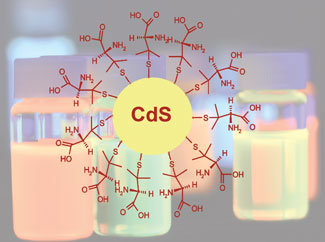| Posted: June 20, 2007 |
Chiral quantum dots |
|
(Nanowerk News) Fluorescent semiconductor nanoparticles that exhibit chiral luminescence have been made by scientists from Ireland ("Chiral highly luminescent CdS quantum dots").
|
|
Chirality is an important factor in molecular recognition, so the development of a nanosized probe with chiral luminescence would be useful in chemistry and biology. By stabilizing cadmium sulfide nanoparticles, or quantum dots (QDs), with penicillamine a team of scientists, led by Yurii Gun'ko at Trinity College, Dublin, believe they have done just that.
|
 |
|
Gun'ko's team prepared the chiral CdS QDs by heating the naked QDs with either left- or right-handed forms (enantiomers) of penicillamine. These gave off a bright green-white light when excited with UV light. When a fifty-fifty (racemic) mixture of the two enantiomers was used, the QDs gave off a bright blue-white light instead.
|
|
Circular dichroism studies (used to distinguish between left- and right-handed circular polarised light) found that while the racemic QDs displayed only a weak signal, the right- and left-handed QDs rotated light in opposite directions, producing almost symmetric signals. This would allow the QDs to be used as fluorescent chemical and biochemical chirality sensors, and in molecular recognition nanodevices.
|
|
Paul O'Brien of the University of Manchester, UK, was enthusiastic about Gun'ko's work, and said 'producing a chiral emission from a quantum dot is an exciting development that could lead to a host of new applications in chiral probes and even electronics'.
|
|
Gun'ko agreed, saying, 'chiral QDs could find important potential applications in the pharmaceutical industry, asymmetric catalysis, bio-analytical technologies and in vitro medical diagnostics.'
|

